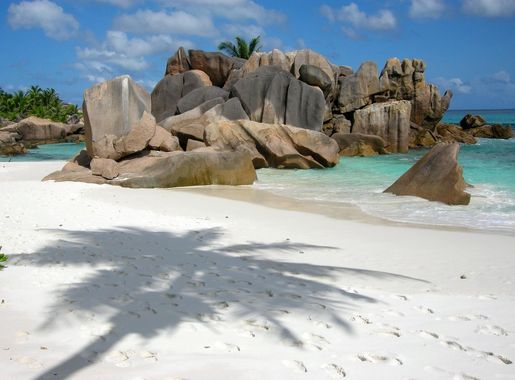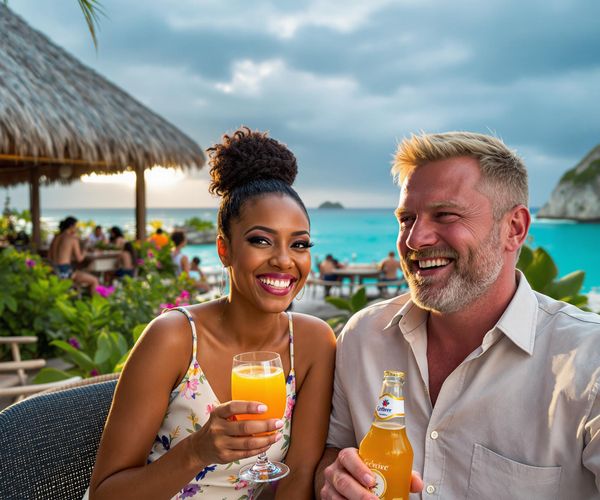
La Digue: A Tropical Paradise in Seychelles
Explore La Digue in Seychelles: A tropical paradise with stunning beaches, lush greenery, and a relaxed, car-free environment perfect for nature lovers and adventurers.
La Digue is a small island in Seychelles, known for its stunning beaches, crystal-clear waters, and lush tropical greenery. This idyllic location is a haven for nature lovers and those seeking a tranquil escape from the hustle and bustle of modern life. The island's unique charm is enhanced by its relaxed pace, friendly locals, and the absence of cars, making it perfect for exploration by bicycle or on foot. The island is home to some of the world's most beautiful beaches, including Anse Source d'Argent, which is famous for its pink granite boulders, powdery white sand, and turquoise waters. The beach is a popular spot for snorkeling, sunbathing, and photography. Another must-visit beach is Grand Anse, known for its powerful waves and scenic beauty. For a more secluded experience, head to Petite Anse or Anse Cocos, where you can enjoy the pristine surroundings in peace. La Digue also offers a rich cultural experience, with traditional Creole architecture, local crafts, and delicious Seychellois cuisine. Don't miss the chance to visit L'Union Estate, a historical plantation that showcases the island's heritage. Here, you can see a working copra mill, vanilla plantation, and the famous giant Aldabra tortoises. For those who love nature, La Digue's interior is covered with dense vegetation and offers excellent hiking opportunities, such as the trail to Nid d'Aigle, the island's highest point, which provides breathtaking panoramic views. Whether you're looking to relax on the beach, explore nature, or immerse yourself in local culture, La Digue has something for everyone. Its serene atmosphere and natural beauty make it a perfect destination for a peaceful and memorable vacation.
Local tips in La Digue
- Rent a bicycle to explore the island, as cars are restricted and cycling is the best way to get around.
- Visit Anse Source d'Argent early in the morning or late in the afternoon to avoid the crowds and capture the best light for photos.
- Bring cash, as not all establishments accept credit cards and there are limited ATMs on the island.
- Pack reef-safe sunscreen and insect repellent to protect yourself and the environment.
- Try local dishes like grilled fish, octopus curry, and coconut-based desserts at one of the island's Creole restaurants.
La Digue: A Tropical Paradise in Seychelles
La Digue is a small island in Seychelles, known for its stunning beaches, crystal-clear waters, and lush tropical greenery. This idyllic location is a haven for nature lovers and those seeking a tranquil escape from the hustle and bustle of modern life. The island's unique charm is enhanced by its relaxed pace, friendly locals, and the absence of cars, making it perfect for exploration by bicycle or on foot. The island is home to some of the world's most beautiful beaches, including Anse Source d'Argent, which is famous for its pink granite boulders, powdery white sand, and turquoise waters. The beach is a popular spot for snorkeling, sunbathing, and photography. Another must-visit beach is Grand Anse, known for its powerful waves and scenic beauty. For a more secluded experience, head to Petite Anse or Anse Cocos, where you can enjoy the pristine surroundings in peace. La Digue also offers a rich cultural experience, with traditional Creole architecture, local crafts, and delicious Seychellois cuisine. Don't miss the chance to visit L'Union Estate, a historical plantation that showcases the island's heritage. Here, you can see a working copra mill, vanilla plantation, and the famous giant Aldabra tortoises. For those who love nature, La Digue's interior is covered with dense vegetation and offers excellent hiking opportunities, such as the trail to Nid d'Aigle, the island's highest point, which provides breathtaking panoramic views. Whether you're looking to relax on the beach, explore nature, or immerse yourself in local culture, La Digue has something for everyone. Its serene atmosphere and natural beauty make it a perfect destination for a peaceful and memorable vacation.
When is the best time to go to La Digue?
Iconic landmarks you can’t miss
Grand Anse Beach
Discover the enchanting beauty of Grand Anse Beach, where golden sands meet turquoise waters in a tropical paradise perfect for relaxation and adventure.
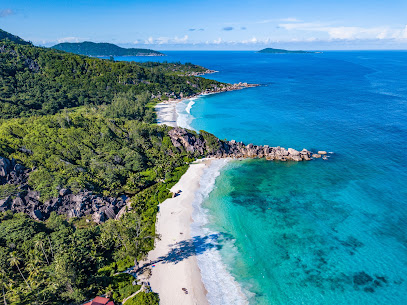
Crystal Water Kayaks
Experience the breathtaking beauty of Seychelles with unforgettable kayaking adventures at Crystal Water Kayaks in La Passe.
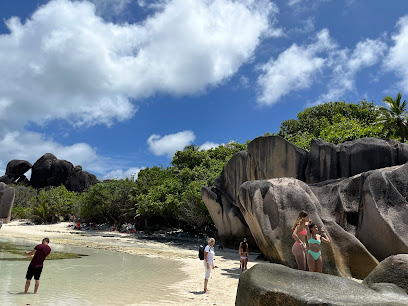
Petite Anse Beach
Experience the pristine beauty and tranquility of Petite Anse Beach in the Seychelles, where stunning sunsets and serene waters await.
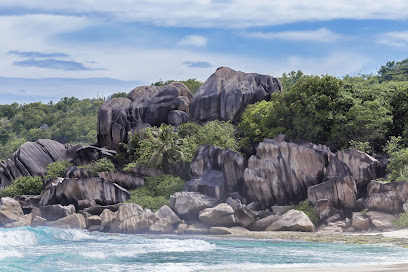
Domaine de Val des Près - Craft Village
Discover the artistic heart of Seychelles at Domaine de Val des Près, where history meets local craftsmanship in a vibrant craft village.
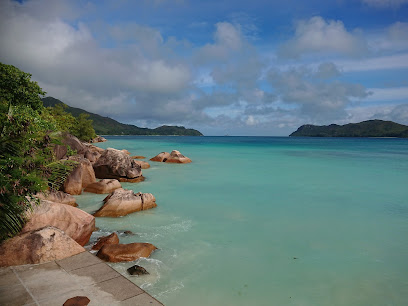
Venn's Town - Mission Lodge
Explore the lush landscapes and rich heritage of Seychelles at Venn's Town - Mission Lodge, a serene tourist attraction in Sans Soucis.
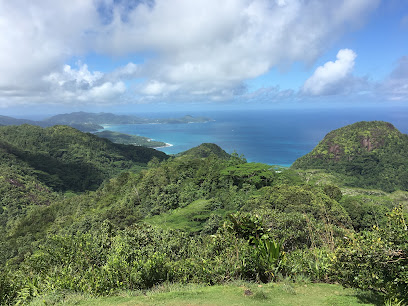
Anse Source d'Argent
Discover the breathtaking beauty of Anse Source d'Argent, a serene bay in Seychelles renowned for its stunning landscapes and vibrant marine life.

Anse Marron
Explore the pristine beauty of Anse Marron on La Digue Island, a serene beach getaway perfect for relaxation and adventure in the Seychelles.
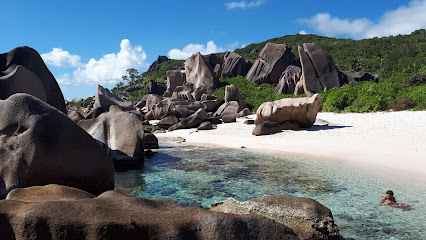
Bicentenary Monument Seychelles
Explore the Bicentenary Monument in Seychelles, a stunning tribute to the islands' rich history and cultural heritage, perfect for every traveler.
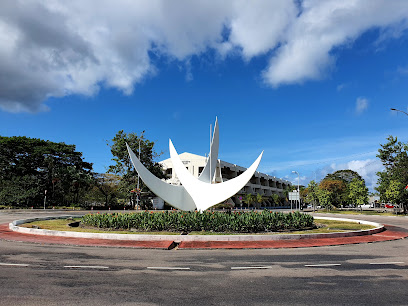
Ladigue
Explore the culinary delights of La Digue, Seychelles, where fresh local ingredients and stunning ocean views create unforgettable dining experiences.
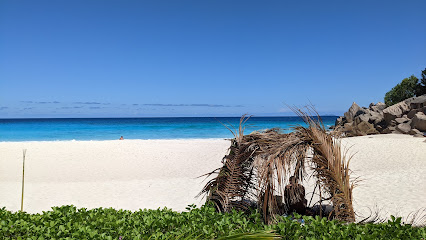
Simon’s Fruit Shop
Discover the taste of the tropics at Simon's Fruit Shop in La Digue, where fresh juices and local fruits create a refreshing paradise for tourists.
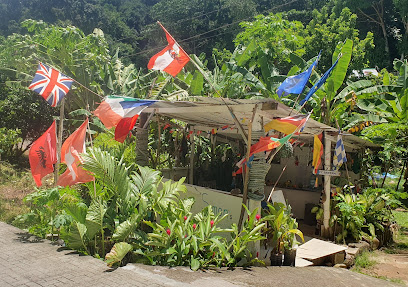
Lanboursir Restaurant
Discover the flavors of Seychelles at Lanboursir Restaurant, a family-friendly dining gem in the heart of La Digue.
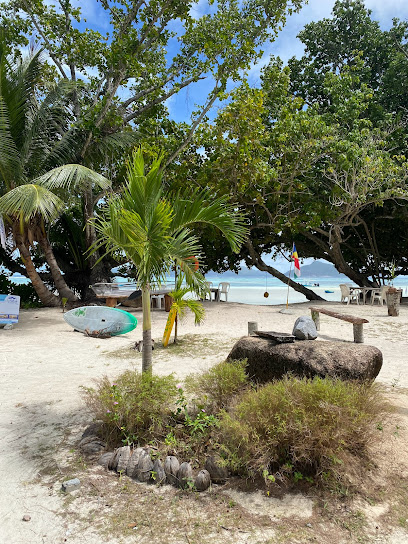
Mission Lodge Cemetery
Discover the rich heritage and tranquil beauty of Mission Lodge Cemetery, a significant landmark in the Seychelles that tells the stories of its past.
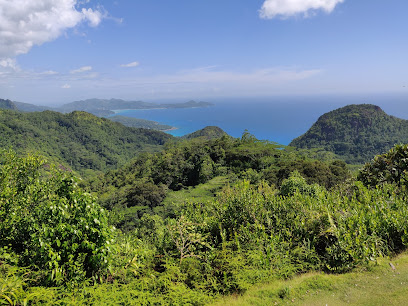
Grand l'Anse
Experience the serene beauty of Grand l'Anse on La Digue, where turquoise waters and soft sands create a tropical paradise for relaxation and adventure.
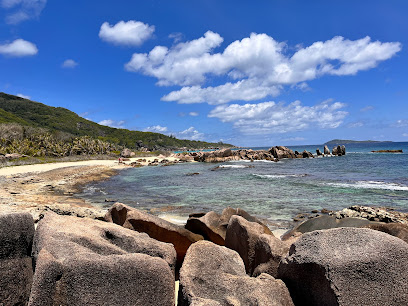
Point Conan
Explore the breathtaking views and serene atmosphere at Point Conan, a must-visit tourist attraction in Victoria, ideal for nature lovers and photographers.
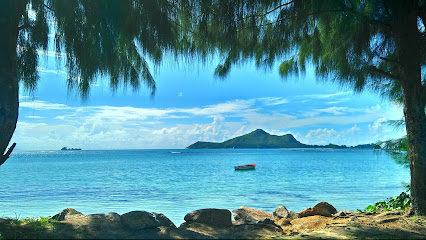
Unity monument
Visit the Unity Monument in Seychelles, a stunning historical landmark representing peace and cultural harmony amidst breathtaking island beauty.
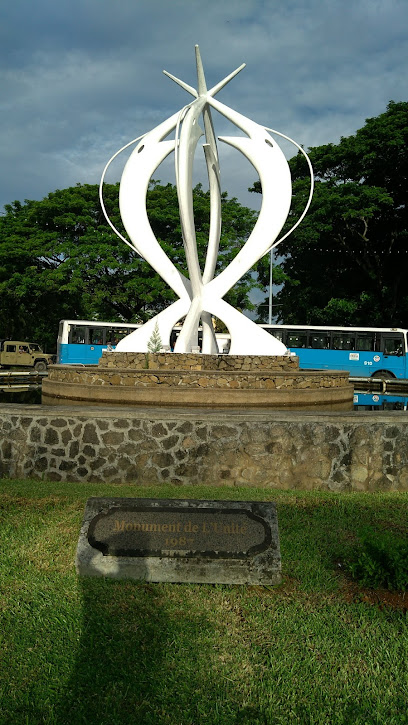
Unmissable attractions to see
Vallée de Mai, Praslin, Seychelles
Explore the breathtaking Vallée de Mai in Baie Ste Anne, a UNESCO World Heritage Site filled with unique flora, fauna, and a rich tropical ecosystem.
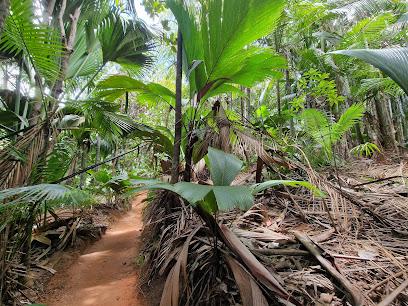
L’Union Estate Farm
Experience the rich cultural heritage and stunning natural beauty of L’Union Estate Farm on La Digue Island, a must-visit destination in Seychelles.
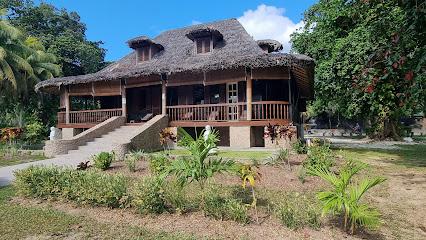
Saint-Anne Marine National Park
Explore the stunning Saint-Anne Marine National Park, a tropical paradise with vibrant coral reefs, diverse marine life, and pristine beaches in Seychelles.
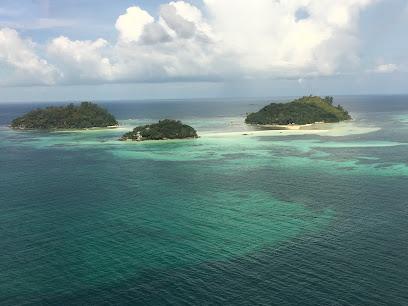
Saint-Anne Marine National Park
Explore the enchanting Saint-Anne Marine National Park: a paradise of pristine beaches, vibrant coral reefs, and abundant marine life in Seychelles.
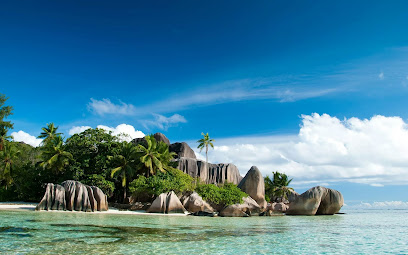
Petite Anse Beach
Discover the pristine sands and tranquil waters of Petite Anse Beach, a hidden paradise in the heart of the Seychelles perfect for relaxation and adventure.
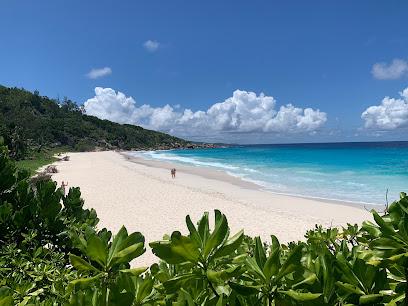
Eden Island, Seychelles
Discover the luxurious Eden Island in Seychelles, where pristine beaches and vibrant marine life create an unforgettable tropical escape.
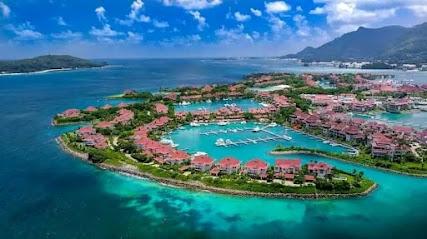
Praslin
Experience Praslin, Seychelles: A Tropical Paradise with Stunning Beaches, Lush Nature Reserves, and Unique Wildlife.
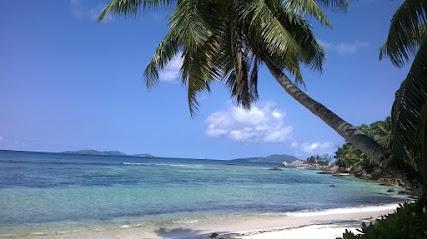
Anse Georgette
Discover the breathtaking beauty of Anse Georgette, a hidden gem in the Seychelles, where pristine beaches and serene waters await your arrival.
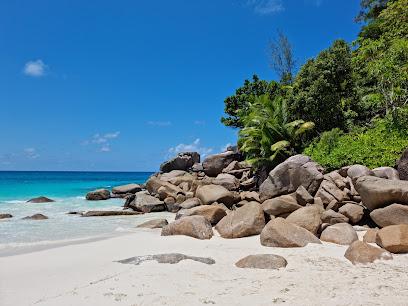
Cote D'Or Beach
Experience the pristine beauty of Cote D'Or Beach in Seychelles, where soft sands meet vibrant waters, offering a perfect tropical escape.
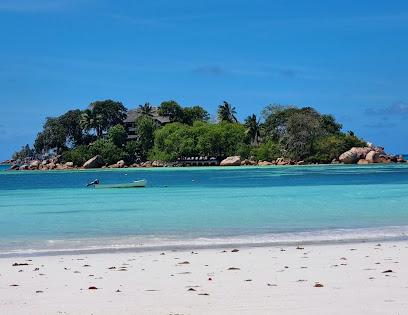
Sunset Beach
Experience the tranquil charm of Sunset Beach in Seychelles, a perfect coastal getaway with stunning views and vibrant marine life.
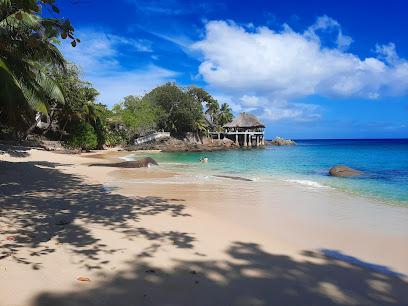
Anse Source d'Argent
Discover the breathtaking beauty of Anse Source d'Argent, a tropical haven with stunning granite formations and crystal-clear waters in La Digue, Seychelles.
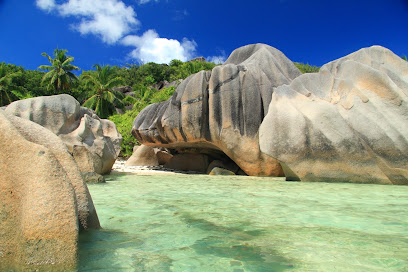
Curieuse
Explore Curieuse Island's pristine beaches, unique wildlife, and rich history in the heart of Seychelles.
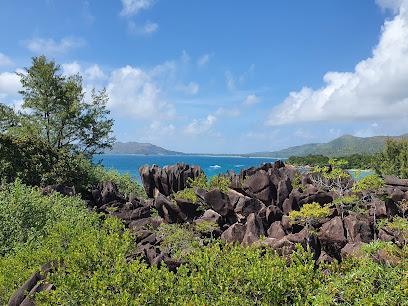
Venn's Town - Mission Lodge
Explore Venn's Town - Mission Lodge, a historic site celebrating the emancipation of slaves amidst stunning natural beauty in Seychelles.
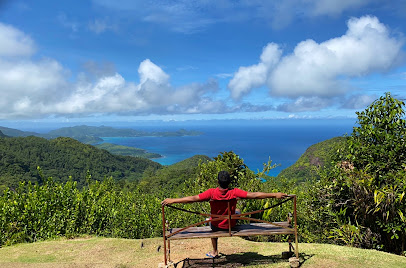
Ile Moyenne
Experience the serene beauty of Ile Moyenne, a tropical paradise in the Seychelles, ideal for nature lovers and those seeking tranquility.
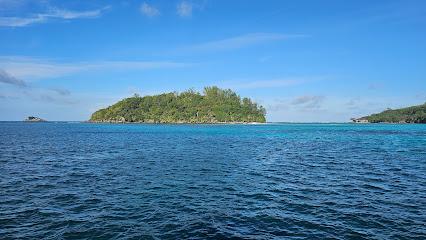
Mervin taxi service & island tour
Experience seamless travel and unforgettable island tours in Seychelles with Mervin Taxi Service & Island Tour, your gateway to paradise.
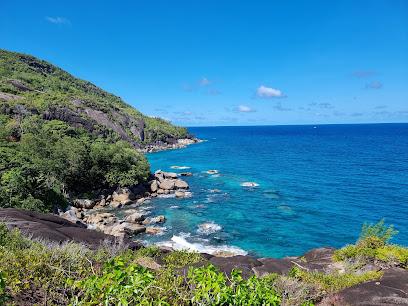
Essential places to dine
Baobab Pizzeria
Discover Baobab Pizzeria: A pizza haven in Mare Anglaise offering delightful flavors and an inviting atmosphere.
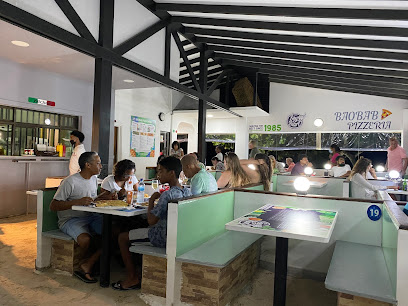
Kafe Kreol Cafe & Restaurant
Experience the vibrant flavors of Creole cuisine at Kafe Kreol Cafe & Restaurant in Anse Royale, Seychelles - A culinary delight awaits.

The Boat House Restaurant
Experience exquisite local cuisine at The Boat House Restaurant in Beau Vallon - where breathtaking views meet delicious flavors.
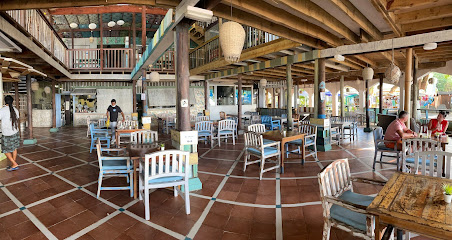
La Perle Noire Restaurant
Experience authentic Italian cuisine at La Perle Noire Restaurant in Beau Vallon—where every meal is a celebration of flavor.
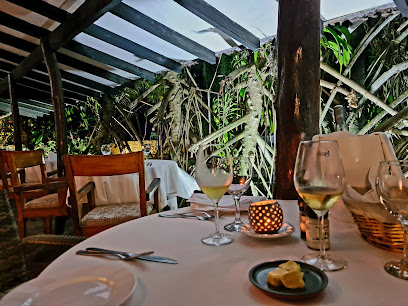
Perry's Grillz
Discover the vibrant flavors of Seychelles at Perry's Grillz – where culinary excellence meets island charm.
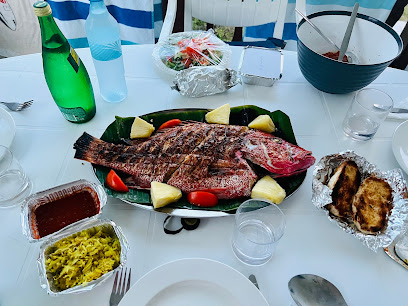
Bravo Restaurant
Experience the flavors of Seychelles at Bravo Restaurant on Eden Island - where local ingredients meet exquisite culinary artistry.
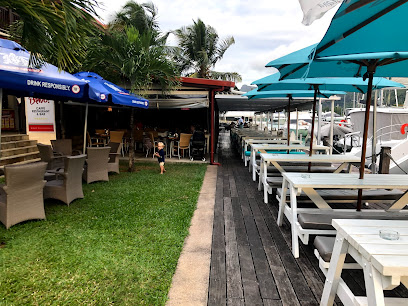
Marie Antoinette
Experience authentic Seychellois cuisine at Marie Antoinette in Saint Louis—where every meal is a celebration of local flavors.
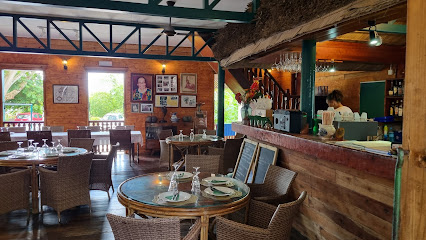
The Boardwalk Bar & Grill
Discover exquisite seafood and vibrant nightlife at The Boardwalk Bar & Grill on Eden Island - where culinary delights meet stunning marina views.
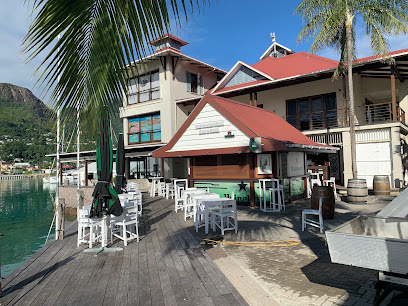
Green House Bar, Cafe, Restaurant
Experience the best of Italian and Creole cuisine at Green House Bar, Cafe, Restaurant in Victoria's scenic Au Cap.
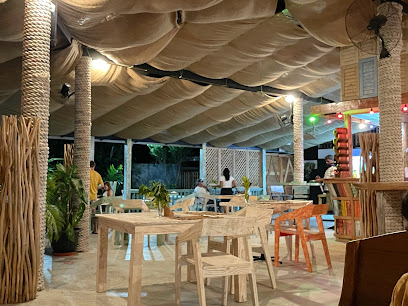
Maison Marengo
Discover culinary delights at Maison Marengo in Seychelles - where fresh local ingredients meet exceptional Creole cuisine.
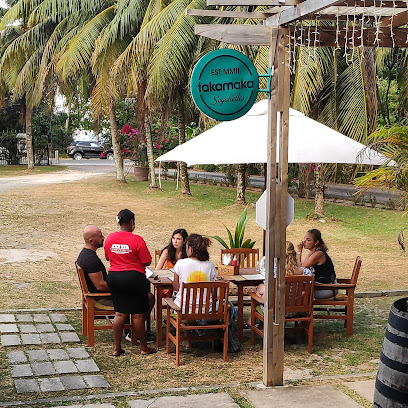
Kapatya restaurant
Experience authentic Seychellois cuisine at Kapatya Restaurant on Mahe Island—where fresh ingredients meet breathtaking views.
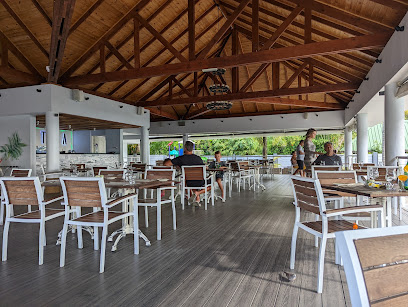
The Copper Pot
Discover the rich flavors of Seychelles at The Copper Pot – an affordable dining experience in beautiful Beau Vallon.
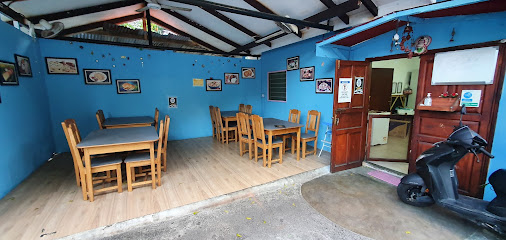
La Dolce Vita
Discover La Dolce Vita: An authentic Italian culinary escape in Seychelles with exquisite flavors and warm hospitality.
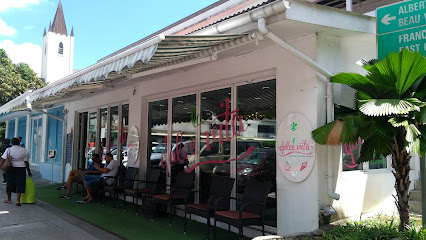
Anchor Cafe & Restaurant
Discover exquisite local flavors at Anchor Cafe & Restaurant in Seychelles - where every meal becomes a delightful experience amidst stunning views.
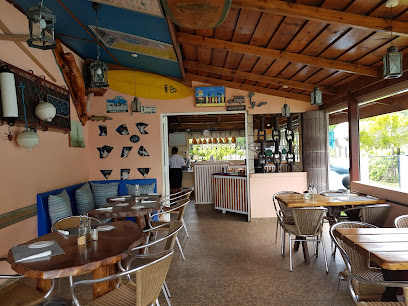
A Taste of Italy
Experience authentic Italian cuisine at A Taste of Italy in Victoria, Seychelles - where every meal is a celebration of flavor.
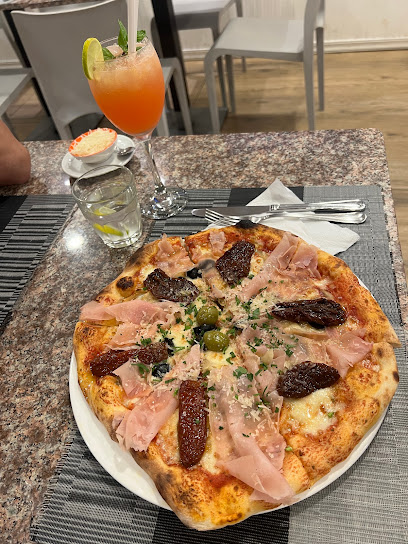
Markets, malls and hidden boutiques
Koral Souvenir Boutique
Discover the essence of Seychelles at Koral Souvenir Boutique: a charming store filled with local art, jewelry, and unique handicrafts.
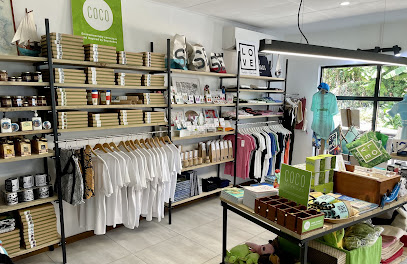
Exotic Scent's
Explore Exotic Scent's in Victoria, Seychelles - your ultimate duty-free shopping destination for luxury perfumes and cosmetics.
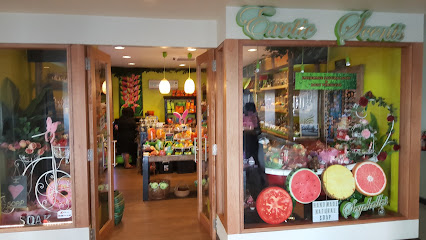
Seychelles Duty Free
Discover the ultimate shopping experience at Seychelles Duty Free, featuring luxury goods and local crafts at unbeatable prices in Victoria.
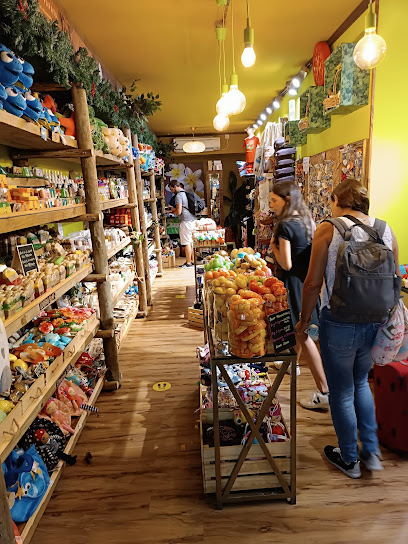
Sigedon LTD
Explore the literary charm of Sigedon LTD, a unique book store in Providence, Mahé, offering a delightful selection of local and international literature.

Exotic Scents Seychelles
Explore the enchanting fragrances and unique gifts at Exotic Scents Seychelles, the perfect souvenir shop in Eden Island Marina.
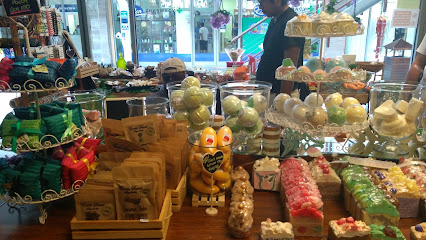
RM Valli Shop
Explore the vibrant RM Valli Shop in Providence, your gateway to authentic Seychellois crafts and unforgettable souvenirs.
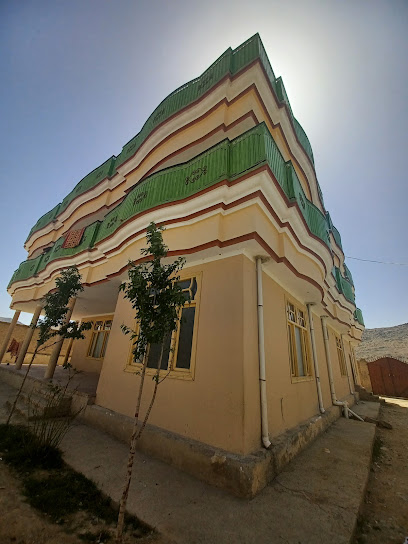
Pop-Up Shop
Discover the essence of Seychelles at the Pop-Up Shop, a vibrant supermarket in Victoria offering local flavors and unique souvenirs.
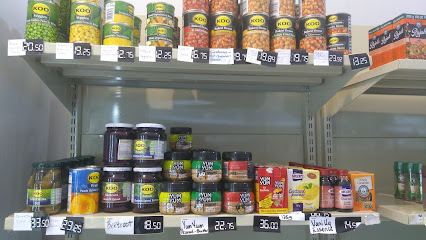
CHEZ AMI SHOP
Discover the rich flavors of Providence at Chez Ami Shop, your go-to grocery store for local and international culinary delights.

Print IT Seychelles
Discover the vibrant essence of Seychelles fashion at Print IT Seychelles, where unique clothing and local style come together.

Connections Trading
Explore Connections Trading in Providence for a fantastic selection of pet supplies and accessories, perfect for every pet lover.

Jehk Art & Craft Souvenir
Explore the vibrant artistry of Jehk Art & Craft Souvenir, where unique local treasures await to be discovered.
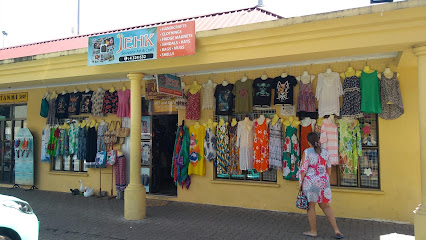
Kreolor - Seychelles Airport
Discover Kreolor at Seychelles Airport, your ultimate duty-free destination for unique souvenirs and luxury items before you depart.
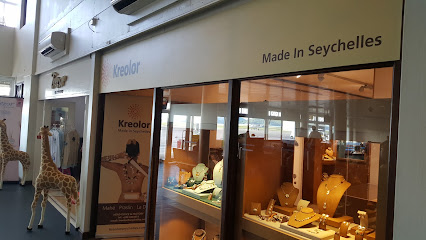
COCO
Explore the vibrant artistry of Seychelles at COCO, your go-to clothing store and souvenir manufacturer in Providence Zone 18.
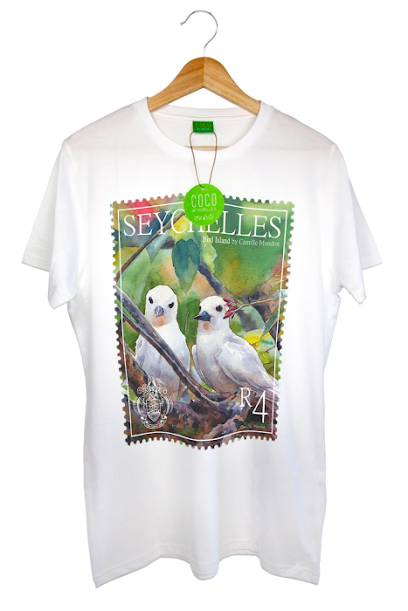
Quiksilver
Discover stylish surf wear and beach accessories at Quiksilver on Eden Island, a must-visit for tourists embracing island life.

Badhma supermarket
Discover local flavors and products at Badhma Supermarket, a charming grocery store in the heart of Seychelles.
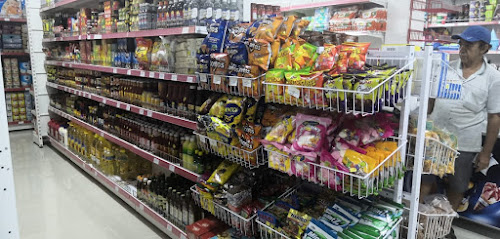
Essential bars & hidden hideouts
Coco Bar
Experience the vibrant Coco Bar on La Digue Island, where delicious cocktails and stunning views create the perfect tropical escape.
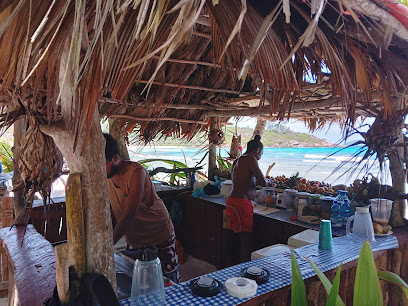
Fruita Cabana Bar
Experience tropical bliss at Fruita Cabana Bar, where fresh juices and stunning views of Anse Source D'Argent await every visitor.

Ladigue
Experience the rich culinary culture of La Digue, where fresh seafood and traditional Creole flavors meet breathtaking island beauty.
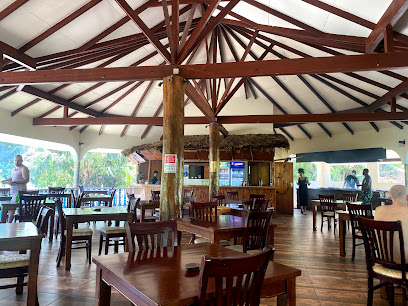
Lanboursir Restaurant
Experience authentic Seychellois cuisine in a family-friendly setting at Lanboursir Restaurant, a culinary gem on La Digue Island.
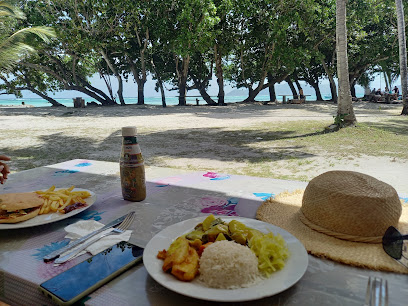
Grand Anse Beach Bar
Experience the serene beauty of Grand Anse Beach Bar in La Digue, where tropical vibes meet exquisite dining and breathtaking ocean views.
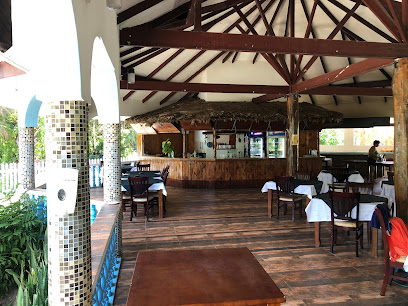
Robinson Crusoe Bar
Experience the enchanting ambiance of Robinson Crusoe Bar on La Digue, where tropical cocktails meet breathtaking island views.
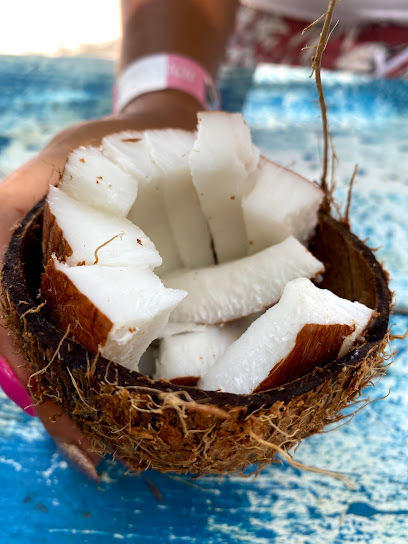
Travel experiences inspired by this city
Explore more travel diariesLocal Phrases
-
- HelloBonjou
[bon-zho] - GoodbyeOrevwar
[or-ev-war] - YesWi
[wee] - NoNon
[non] - Please/You're welcomeSilvouple
[sil-vo-pleh] - Thank youMersi
[mer-see] - Excuse me/SorryEskize mwa
[es-kee-zeh mwah] - How are you?Ki mannyer ou byen?
[kee man-nyer oo byen] - Fine. And you?Byen. E ou?
[byen. ay oo] - Do you speak English?Ou parle angle?
[oo par-lay ahn-glay] - I don't understandMwan pa konpran
[mwahn pa kon-pran]
- HelloBonjou
-
- I'd like to see the menu, pleaseMwan toule menu, silvouple
[mwahn too-lay meh-noo, sil-vo-pleh] - I don't eat meatMwan pa manze karn
[mwahn pa manz karn] - Cheers!Sante!
[san-tay] - I would like to pay, pleaseMwan anvi peye, silvouple
[mwahn an-vee pay, sil-vo-pleh]
- I'd like to see the menu, pleaseMwan toule menu, silvouple
-
- Help!Sekour!
[seh-koor] - Go away!Al tou!
[al too] - Call the Police!Telefon lapolis!
[te-le-fon la-po-lee] - Call a doctor!Telefon dokter!
[te-le-fon dok-ter] - I'm lostMwan perdi
[mwahn per-dee] - I'm illMwan malad
[mwahn mah-lad]
- Help!Sekour!
-
- I'd like to buy...Mwan anvi aste...
[mwahn an-vee ast] - I'm just lookingMwan zis gade
[mwahn zees gahd] - How much is it?Kombien sa koute?
[kom-byen sah koot] - That's too expensiveSa tro cher
[sah troh shair] - Can you lower the price?Ou kapab redwi pri sa?
[oo ka-pahb red-wee pree sah]
- I'd like to buy...Mwan anvi aste...
-
- What time is it?Ki lezèr li fè?
[kee lez-air lee feh] - It's one o'clockLi en ler
[lee en lair] - Half past (10)Minuit diz
[mi-nwee deez] - MorningMaten
[mah-ten] - AfternoonLaprèmidi
[la-pre-mee-dee] - EveningSwadizwa
[swa-deez-wah] - YesterdayZèr
[zair] - TodayZordi
[zor-dee] - TomorrowDemin
[deh-meen] - 1En
[en] - 2De
[day] - 3Twaz
[twaaz] - 4Kat
[kaht] - 5Sis
[sees] - 6Siz
[siz] - 7Set
[set] - 8Wit
[weet] - 9Nèf
[nef] - 10Diz
[deez]
- What time is it?Ki lezèr li fè?
-
- Where's a/the...?Ki kote...?
[kee koht] - What's the address?Ki adres...
[kee ah-dres] - Can you show me (on the map)?Ou kapab montre mwan (sir lat map)?
[oo ka-pahb mon-treh mwahn (seer laht map)] - When's the next (bus)?Kan lesenn (bis) prochen?
[kan le-sen (bees) pro-shen] - A ticket (to ....)En billet (ver ....)
[en bee-lay (vehr)]
- Where's a/the...?Ki kote...?
History of La Digue
-
La Digue, the fourth largest island in the Seychelles, was first sighted by European explorers in the early 17th century. The island was named after the ship 'La Digue,' which was part of the fleet of French explorer Lazare Picault. In the late 18th century, French colonists began to settle on La Digue, bringing with them African slaves to work on coconut and vanilla plantations.
-
The abolition of slavery in 1835 marked a significant turning point for La Digue. Freed slaves and their descendants established a unique Creole culture that has come to define the island. This culture is characterized by a blend of African, European, and Asian influences, evident in the island's language, cuisine, music, and traditions.
-
During the 19th and early 20th centuries, La Digue became an important center for vanilla and copra (dried coconut meat) production. The island's fertile soil and favorable climate made it an ideal location for these industries. The Union Estate, a large plantation, played a crucial role in the agricultural economy and remains a popular tourist attraction today, showcasing traditional plantation life.
-
La Digue boasts several well-preserved examples of colonial architecture, reflecting its historical ties to France and Britain. The island's charming Creole houses, with their distinctive wooden verandas and colorful facades, are a testament to this architectural heritage. Key sites include the Notre Dame de L’Assomption Church, built in 1857, which remains a focal point for the island's predominantly Catholic community.
-
In recent decades, La Digue has become renowned for its commitment to environmental conservation. The island is home to several protected areas, including the Veuve Nature Reserve, which shelters the endangered Seychelles Paradise Flycatcher. Efforts to preserve La Digue's pristine beaches, coral reefs, and unique biodiversity have made it a model for sustainable tourism in the Seychelles.
-
Tourism has become the cornerstone of La Digue's economy, attracting visitors with its stunning beaches, such as Anse Source d'Argent, and relaxed, car-free lifestyle. While modern amenities have been introduced to accommodate tourists, the island has managed to retain its traditional charm. Bicycles and ox-carts remain the primary modes of transportation, preserving the tranquil pace of life that defines La Digue.
La Digue Essentials
-
La Digue is accessible via ferry from Mahé or Praslin, the two larger islands of Seychelles. The most common route is to fly into Seychelles International Airport (SEZ) on Mahé, then take a ferry to Praslin, followed by a 15-minute ferry ride to La Digue. Ferries run multiple times a day, and tickets can be purchased online or at the ferry terminals. Helicopter transfers are also available for a more luxurious and faster option.
-
La Digue is known for its laid-back, car-free environment. The primary modes of transport are bicycles and ox-carts. Bicycles can be rented from various rental shops across the island. For those who prefer not to cycle, ox-carts, a traditional mode of transport, are available for hire. Walking is also a viable option, as the island is small and many attractions are within walking distance.
-
The official currency in Seychelles is the Seychellois Rupee (SCR). Credit cards are widely accepted in hotels, restaurants, and larger shops, but it is advisable to carry some cash for smaller establishments and local markets. ATMs are available on La Digue, but it's a good idea to withdraw sufficient cash upon arrival in Seychelles.
-
La Digue is generally a very safe destination for tourists. However, standard precautions should still be taken. Avoid leaving valuables unattended on beaches or in public places. There are no specific high-crime areas targeting tourists, but it is always wise to stay vigilant and aware of your surroundings, especially at night.
-
In case of an emergency, dial 999 for immediate assistance. The island has a small police station and a medical clinic that can handle most medical issues. For more severe medical emergencies, you may need to be transported to Mahé. It is highly recommended to have travel insurance that covers medical emergencies and evacuation.
-
Fashion: Do dress modestly, especially when visiting religious sites. Beachwear is appropriate on the beach but not in public or in town. Religion: Do respect local customs and traditions. Remove your shoes when entering someone's home or a place of worship. Public Transport: Since public transport is limited, do respect the local ways of getting around, such as ox-carts and bicycles. Greetings: Do greet people politely; a simple 'Hello' or 'Bonjour' is appreciated. Eating & Drinking: Do try local foods and drinks. Don't refuse hospitality, as it is considered impolite.
-
To experience La Digue like a local, start your day early to watch the sunrise at Anse Source d'Argent, one of the most beautiful beaches in the world. Visit local markets to buy fresh produce and traditional Seychellois goods. Engage with locals, as they are often friendly and willing to share stories about the island. Don't miss the opportunity to explore the island's interior, including the Veuve Reserve, home to the rare Black Paradise Flycatcher.
Trending Landmark in La Digue
-
Grand Anse Beach
-
Crystal Water Kayaks
-
Petite Anse Beach
-
Domaine de Val des Près - Craft Village
-
Venn's Town - Mission Lodge
-
Anse Source d'Argent
-
Anse Marron
-
Bicentenary Monument Seychelles
-
Ladigue
-
Simon’s Fruit Shop
-
Lanboursir Restaurant
-
Mission Lodge Cemetery
-
Grand l'Anse
-
Point Conan
-
Unity monument
Nearby Cities to La Digue
-
Things To Do in Beau Vallon
-
Things To Do in Grand Anse
-
Things To Do in Anse Royale
-
Things To Do in Port Glaud
-
Things To Do in Anse Boudin
-
Things To Do in Baie Lazare
-
Things To Do in Antsiranana
-
Things To Do in Diego Suarez
-
Things To Do in Nosy Be
-
Things To Do in Mogadishu
-
Things To Do in Koungou
-
Things To Do in Mamoudzou
-
Things To Do in Dembeni
-
Things To Do in Acoua
-
Things To Do in Bandrele






